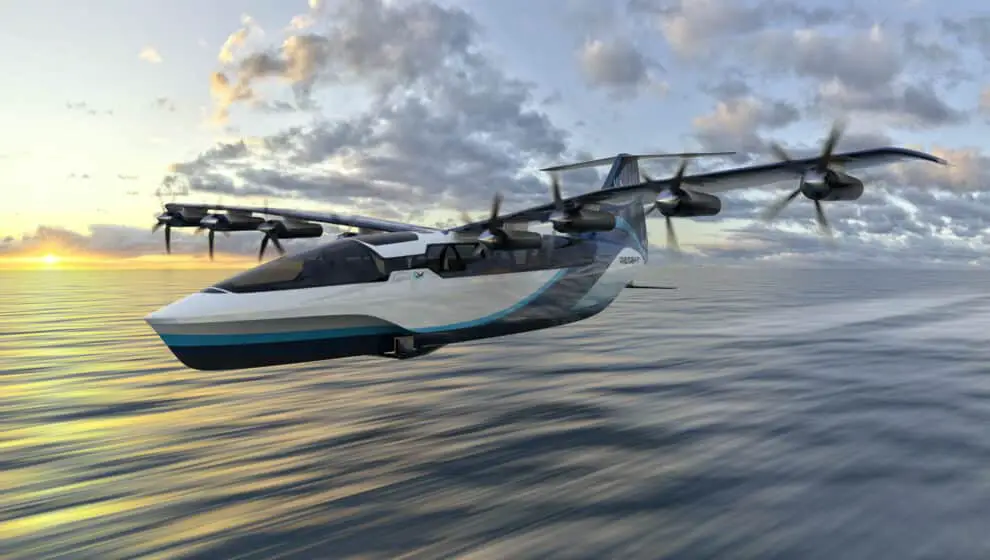Better, cheaper, and more sustainable air travel could be arriving soon.
Hawaiian Airlines has invested in a Boston-based company that seeks to bring all-electric airplanes into commercial service, providing fast, efficient, and low-cost travel for regular, short-duration routes.
The goal of the company, Regent Craft, is to reduce the cost and hassle of regional transportation between coastal cities. It designed a 100-person, all-electric seaglider called the Monarch that will be zero-emission and half the cost to operate as a traditional aircraft. The seaglider is an all-electric plane that flies just above the water’s surface and couples the speed of air travel with the operating cost of a boat.
It will fly routes up to 180 miles with existing battery technology and routes up to 500 miles with next-generation batteries. So it’s ideal for short, regularly scheduled routes—such as between Hawaiian islands or coastal cities like New York and Boston, Los Angeles and San Diego, or Miami and Fort Lauderdale. Seagliders would depart from harbors on hydrofoils—technology you might see on eFoil surfboards or America’s Cup racing yachts.
“Once we get into open water, we take off onto our wing, and this is where we accelerate to aircraft speeds, 180 miles an hour, but we do so all within a wingspan of the surface of the water,” says Regent CEO Billy Thalheimer. “They’ll do all of this with zero emissions, or 100-percent battery-electric powered, and they’ll do all of it at about half the cost of an aircraft.” Low-altitude flying leads to less drag and more lift, improving efficiencies and therefore reducing costs.
Regent is a startup backed by many industry-leading financiers such as Thiel Capital, Mesa Air Group, entrepreneur Mark Cuban, Y Combinator, Founders Fund, Caffeinated Capital, and Fitbit founder James Park. The company has more than $6 billion in sales booked from airlines and ferry companies, including firm deposits for the first seaglider deliveries.
Regent is working with governing bodies of the U.S. Coast Guard and the FAA to ensure it can operate safely at low altitudes, particularly in crowded harbors and during inclement weather. Assuming it earns regulatory approval, Regent is on pace for the first flight of their quarter-scale prototype in late 2022.
Regent plans to have 12-passenger planes in operation by 2025. And Hawaiian Airlines, Regent’s first U.S. based design partner for the Monarch, is slated to launch into the commercial space by 2028.
“Innovative inter island transportation has been core to our business since 1929 when we replaced steam ships with airplanes. We are excited to be an early investor in Regent and to be involved in developing its largest seaglider—a vehicle with great potential for Hawaii,” says Hawaiian Air CMO Avi Mannis.
“Regent is committed to helping Hawaii move toward a sustainable transportation future and knows that the very first step is to listen and learn what the community cares about. The response from the community has been overwhelmingly positive and the opportunity to build a seaglider network for Hawaii is a dream come true. We’re thrilled to help push the boundaries of innovation in clean transportation for the state,” says Thalheimer.

